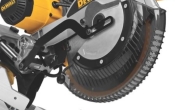
The Roar of the Hot Saw: A Look into the Thrill of Timber Sports
The world of competitive lumberjacking is more than just plaid shirts and axe-throwing. Nestled amongst the traditional chopping events lies a thrilling discipline known as the hot saw. This event isn’t your average backyard chore with a chainsaw. Here, champions wield specially modified machines that are testaments to human ingenuity and raw power.
From Humble Beginnings to Roaring Engines
The hot saw’s origins can be traced back to the early days of logging competitions. Lumberjacks, naturally, wanted to showcase their sawing prowess. Initially, standard chainsaws were used, but as the sport evolved, so did the equipment. Modifications became commonplace, with competitors tinkering with engines, carburetors, and chains to squeeze out every ounce of performance. Today’s hot saws are unrecognizable from their stock counterparts. Boasting heavily modified engines that can reach upwards of 80 horsepower, these machines are built for speed and precision.

A Symphony of Metal and Wood
The allure of the hot saw lies in its captivating blend of power and control. Competitors approach the competition with a well-rehearsed dance. Before the starting buzzer, they meticulously warm up their saws, ensuring peak performance. Once the signal sounds, the true spectacle begins. With a deafening roar, the hot saw rips through the log, sending a cascade of sawdust flying. The athlete’s focus is laser-sharp, their movements a blur of perfectly timed cuts. Each stroke must be precise – a slight miscalculation can spell disaster, resulting in penalty points or even equipment failure.

The Anatomy of a Hot Saw
The heart of the hot saw is the engine. Often derived from high-performance motorcycles or snowmobiles, these engines are extensively modified to handle the demands of the competition. Lightweight components and specially designed exhaust systems are just a few of the modifications that allow the saws to achieve their incredible power-to-weight ratio.
But the engine is just one piece of the puzzle. The chain and bar are equally crucial. Specialized chains, featuring a higher number of teeth and a narrower kerf (the width of the cut), ensure smooth, fast cutting. The bars themselves are often lengthened to accommodate thicker logs.

Safety First: A Balancing Act
While the raw power of the hot saw is undeniable, safety remains paramount. Competitors are outfitted in a comprehensive array of protective gear. Kevlar chaps, helmets with face shields, and noise-canceling ear protection are all mandatory. Additionally, strict safety regulations govern the construction and maintenance of the saws themselves.
Beyond the Competition: A Celebration of Skill
The hot saw event is more than just a race against the clock. It’s a display of athleticism, technical expertise, and a deep respect for the tools of the trade. Competitors come from a variety of backgrounds, from professional loggers to weekend enthusiasts. Each athlete brings their own unique skills and techniques to the table, creating a vibrant and competitive atmosphere.

The Future of Hot Saw: Innovation and Growth
As with any competitive sport, the hot saw is constantly evolving. Manufacturers are pushing the boundaries of engine technology, while experienced competitors continue to refine their sawing techniques. Additionally, the rise of professional timber sports leagues is bringing the sport to a wider audience. This increased exposure is attracting new talent and sponsorships, ensuring a bright future for the hot saw.
Brief History and Evolution of Hot Saws
The hot saw event in timber sports boasts a rich history, intertwined with the evolution of chainsaw technology itself. Here’s a quick look at its journey:
Early Days (Unmodified Chainsaws):
Hot saw competitions emerged alongside other lumberjack events, initially featuring unmodified chainsaws. This was a test of pure human skill and strength.
Rise of Modifications (Engine Power Boost):
As the sport gained popularity, competitors craved faster cutting times. This led to the tinkering of stock saws, with modifications focusing on engines. High-performance engines from motorcycles and snowmobiles became the new base, offering a significant horsepower boost.
Specialized Cutting Systems (Sharpening the Edge):
Alongside engine upgrades, the cutting system underwent a transformation. Standard chains and bars were replaced with specialized options. Chains with more teeth and a narrower kerf ensured smoother, faster cuts, while lengthened bars tackled thicker competition logs.
Safety First (Protective Measures):
Despite the focus on speed, safety remained a priority. Strict regulations for saw construction and maintenance were implemented. Additionally, protective gear – Kevlar chaps, helmets, and ear protection – became mandatory for competitors.
The Future of Hot Saws (Innovation Continues):
The hot saw’s evolution doesn’t stop here. Manufacturers constantly strive for better engine technology, while experienced athletes refine their techniques. With growing professional leagues, the future of hot saws is bright, promising continued innovation and thrilling competition.

Advancements in technology leading to the development of hot saws
The hot saw event in timber sports is a testament to the transformative power of technology. What began as a competition using unmodified chainsaws has morphed into a showcase of heavily modified machines, pushing the boundaries of speed and precision. Let’s delve into the key advancements that fueled the development of the modern hot saw.
Engine Revolutions:
Early hot saw competitions relied on stock chainsaw engines. However, the hunger for faster cutting times spurred modifications. Inspiration came from unexpected corners. High-performance motorcycle and snowmobile engines became the new base, boasting significantly more horsepower (up to 80!) compared to their stock counterparts. These engines underwent further tweaking – lightweight components and specialized exhaust systems were incorporated to achieve an optimal power-to-weight ratio. This translated to a saw that could rip through logs with ferocious speed.
Sharpening the Cutting Edge:
The engine’s power surge wouldn’t be complete without a cutting system to match. Stock chains and bars simply couldn’t handle the demands of professional competition. Specialized chains with a higher tooth count and narrower kerf (the width of the cut) were developed, allowing for smoother and faster cutting. Additionally, bars were lengthened to accommodate the thicker logs used in competitions. This focus on the cutting system ensured that the saw’s newfound power could be translated into efficient and precise cuts.
Beyond Power: The Safety Equation
While advancements in engine and cutting technology are impressive, safety remains paramount. Strict regulations govern the construction and maintenance of hot saws. Additionally, a comprehensive array of protective gear – Kevlar chaps, helmets with face shields, and noise-canceling ear protection – became mandatory for competitors. These advancements ensure that the pursuit of faster cutting times doesn’t come at the expense of safety.
A Symbiotic Relationship:
The hot saw’s evolution is a fascinating example of how technology and human ingenuity work hand-in-hand. As technology allowed for more powerful and efficient machines, competitors pushed the boundaries further, demanding even more from their equipment. This constant push and pull has resulted in a truly remarkable tool – a testament to both human creativity and the transformative power of technological advancements.
The Roar of the Crowd: An Unforgettable Experience
Witnessing a hot saw competition firsthand is an unforgettable experience. The raw power of the engines, the focus of the athletes, and the shower of sawdust create a truly electrifying atmosphere. Whether you’re a lifelong fan of lumber sports or simply seeking a unique and thrilling event, the hot saw is guaranteed to leave you awestruck.












Leave a Reply